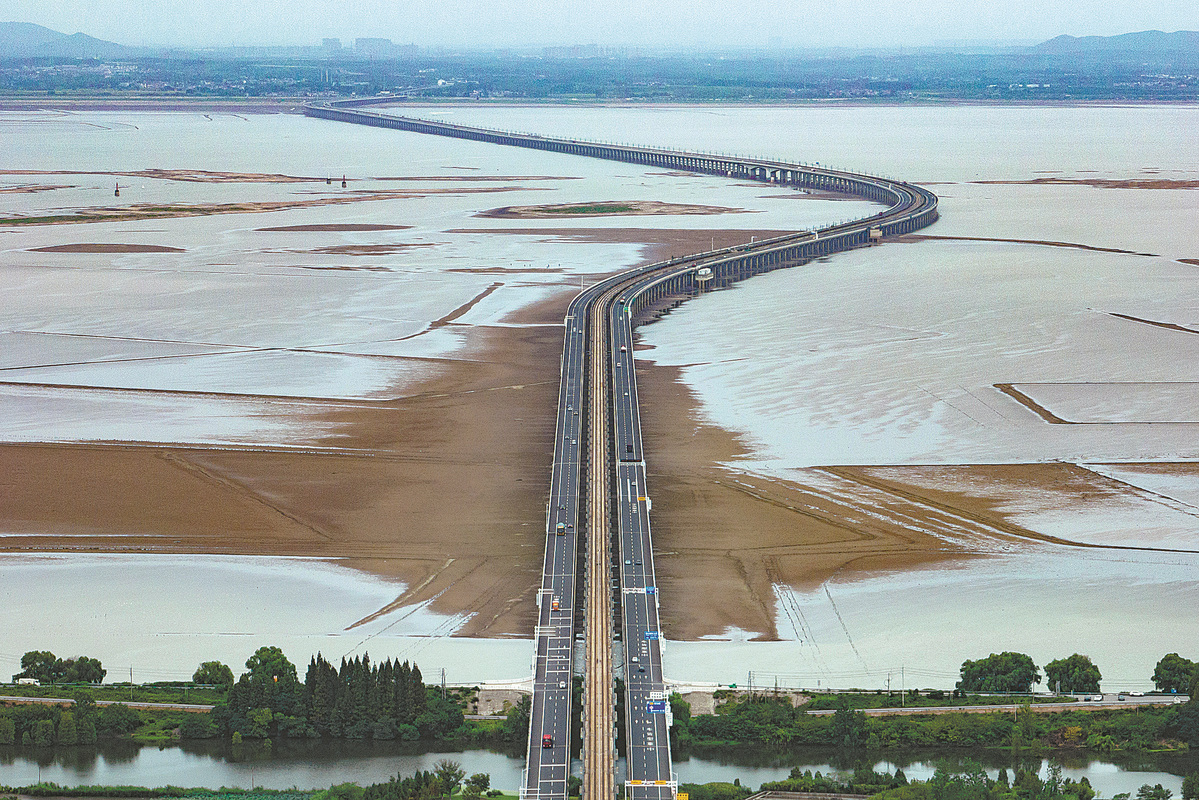Drought risks running water dry in Jiangxi


The extreme drought since July 12 has had a serious impact on the supply of drinking water, agricultural production and ecology across Jiangxi, and the province is maintaining a level III drought emergency response, the second-lowest on the national four-tier emergency response system, according to the local water resources authority.
"Jiangxi has received an average of 178 millimeters of rain since late June, the lowest on record for the period," said Wang Chun, director of the provincial department of water resources. "It is predicted that rainfall in the province from mid-September to October will still be low, meaning we are still facing a serious situation to ensure water supply to residents as well as for industrial and agricultural production."
Poyang Lake, the largest freshwater lake in China, has shrunk to an area of around 290 square kilometers, just 10 percent of its normal size, since the onset of the drought.
With water levels at the landmark Xingzi hydrological station dropping to under eight meters, the lake entered an extreme low-water state on Sept 6, the earliest this has happened since records began in 1951, according to a media release from the hydrological monitoring center in Jiangxi, where the lake is located.
"As a result of consistent low rainfall, Poyang is likely to hit a new record low at the end of September," said Wang. "Twenty-five rivers with a drainage area of over 10 sq km have appeared cut off and 589,066 hectares of crops have been affected."
To reduce the impact of the drought, the province has adopted measures, including strengthening monitoring, forecasting and early warnings, promoting water planning management and implementing the joint operation of reservoir groups, according to Wang.
"According to daily monitoring, the water supply of 151 water sources above the county level was normal, which can ensure supply for over 30 days," said Wang. "When the water supply is insufficient, emergency measures such as backup water sourcing can be used to solve the problem."
Experts have been sent to guide water use plans.
In irrigated areas with insufficient water, the measures adopted include transporting water, transferring water and drilling wells.
When Zhou Shuhuang, a farmer in Baishui township, Jishui county, noticed the continuous drought had led to the slow growth of his grapefruit trees on his 20 hectares of land and that the leaves also appeared to be withering, he immediately sought help from the local government to find alternative water sources.
"The grapefruit will bear fruit next year and the yield will be affected if I fail to irrigate them in time," he said. "Thanks to the coordination of the town government, water from the Yuanbei Reservoir, which is eight kilometers away, could be transferred to my fruit orchard in the mountains to keep all the trees alive."
"We have sent staff members to different grapefruit planting bases in the regions downstream of the reservoir to provide drought situations," said Ye Qichuan, a staff member at the reservoir. "According to the information they reported, we will be able to accurately and scientifically release water to ensure the irrigation of farmland. Currently, we release about 70,000 cubic meters of water every day."
The National Meteorological Center on Tuesday sustained yellow alerts for drought, the second-lowest in its four-tier system.
According to the monitoring of the National Climate Center on Tuesday, southwest Zhejiang province, west Fujian province, most parts of Jiangxi and Hunan province, southeast Chongqing and northeast Guizhou province have extreme drought weather warnings, while areas of severe drought-slightly better than extreme-extend even further to much of Hubei, Jiangsu and Guangdong provinces.
The drought in Sichuan province and Chongqing is expected to alleviate as rain is predicted for the following days, but the other drought-afflicted areas, such as Jiangxi and Hunan, still won't see much precipitation for some time.
- Sino-foreign youth dialogue promotes mutual understanding in Nanning
- Surfing in Guangdong's Shantou
- Macao SAR to speed up reform, diversification in 2026: chief executive
- China's primary school population peaks, middle school to follow
- China's express delivery sector posts steady growth in first 10 months
- Intl visitors embrace nature, biodiversity at Tianmu Mountain





































